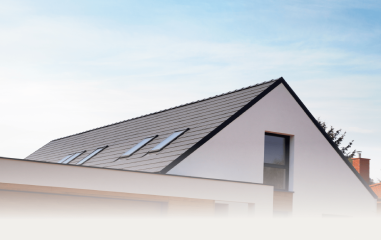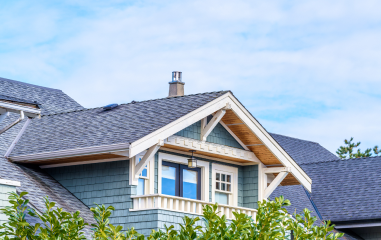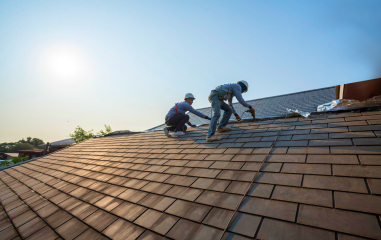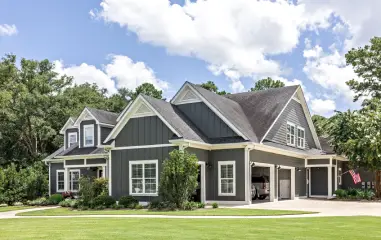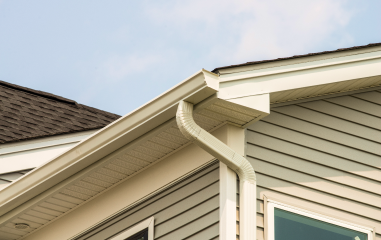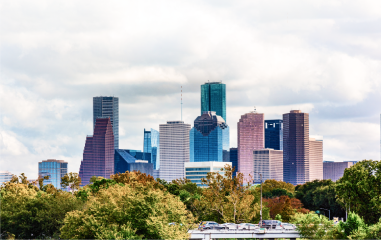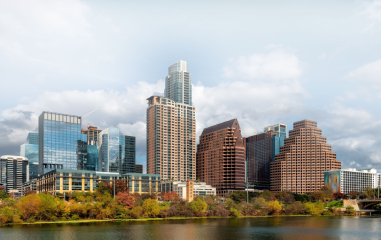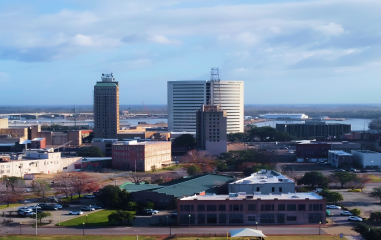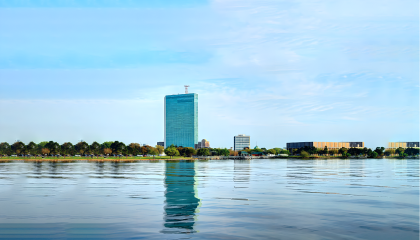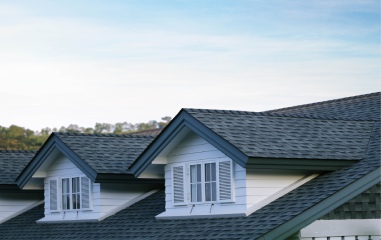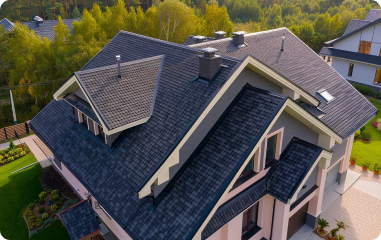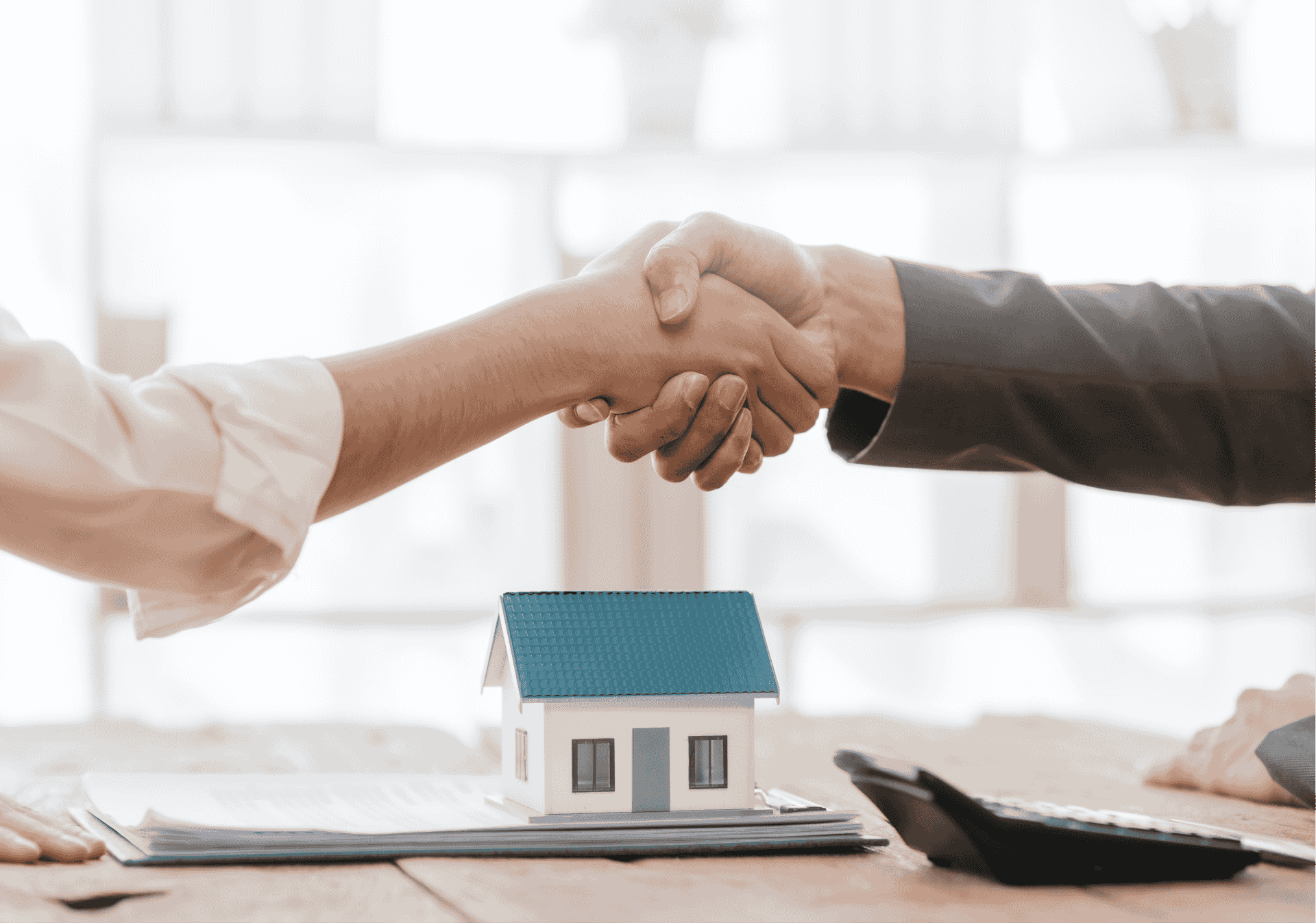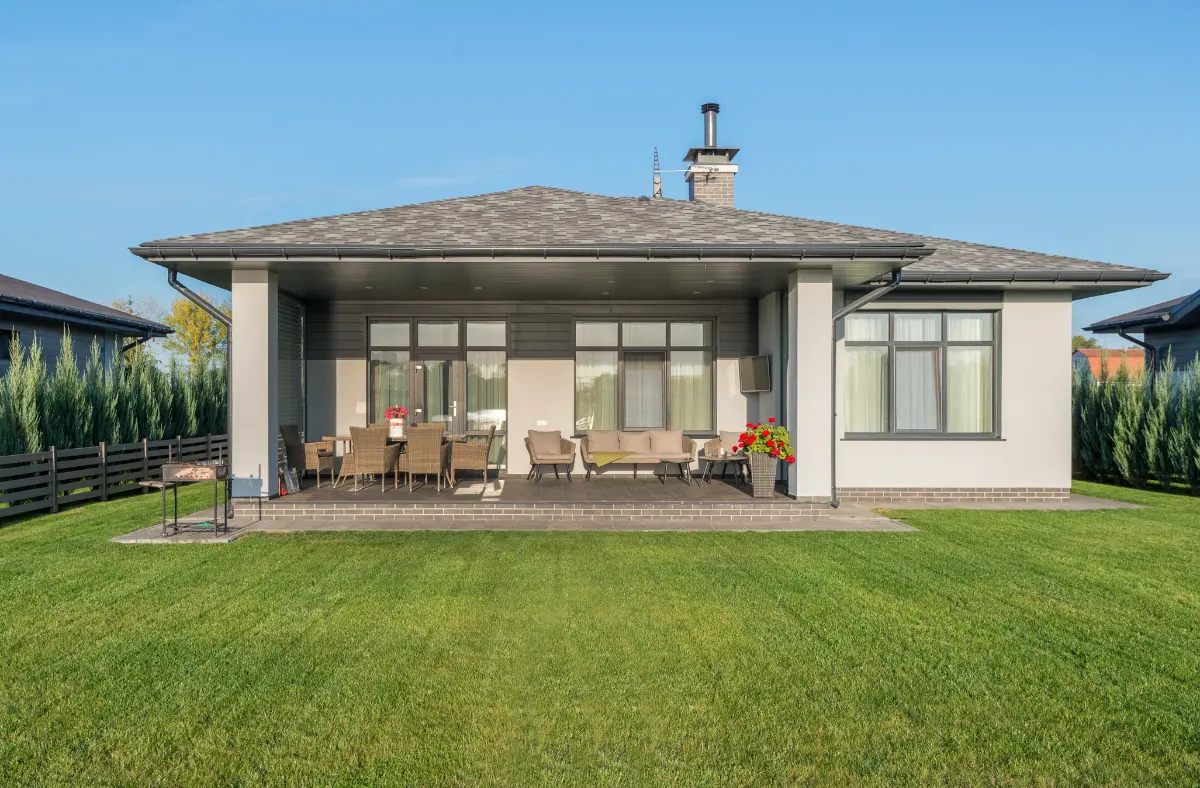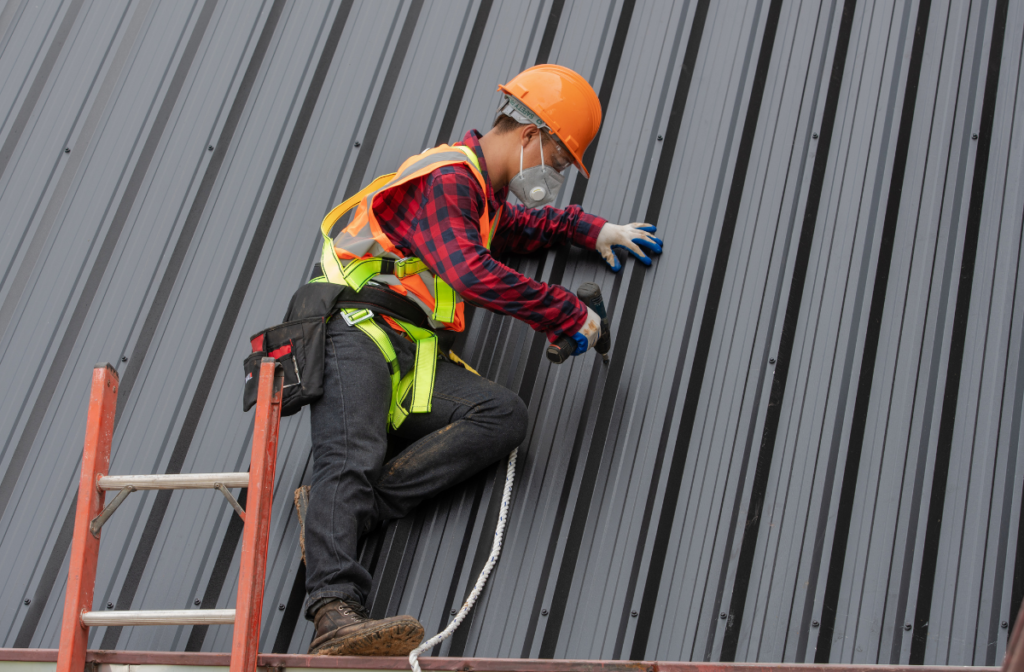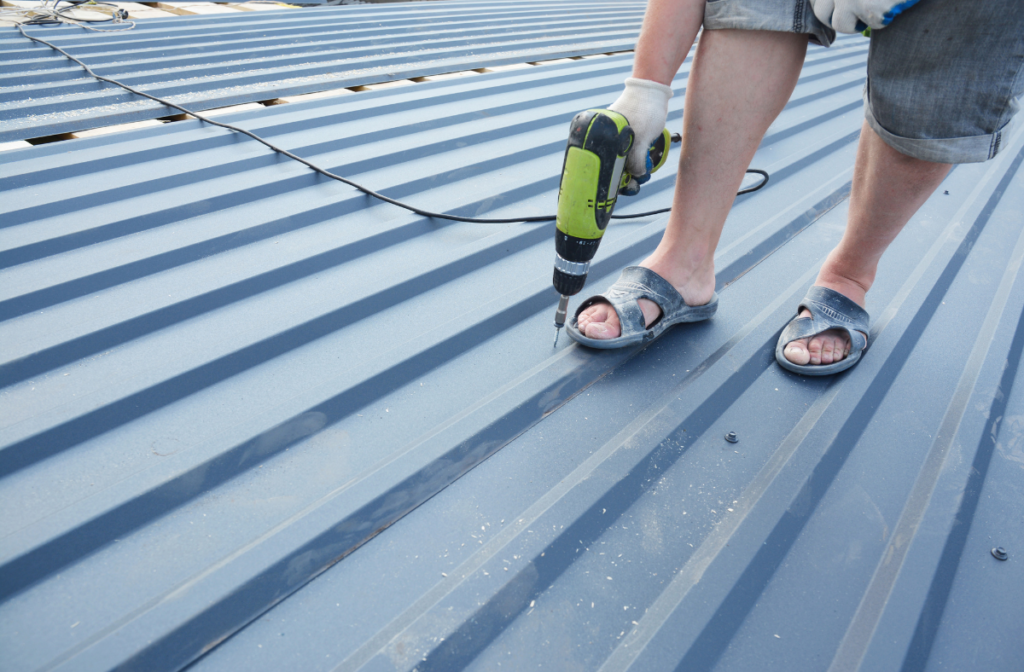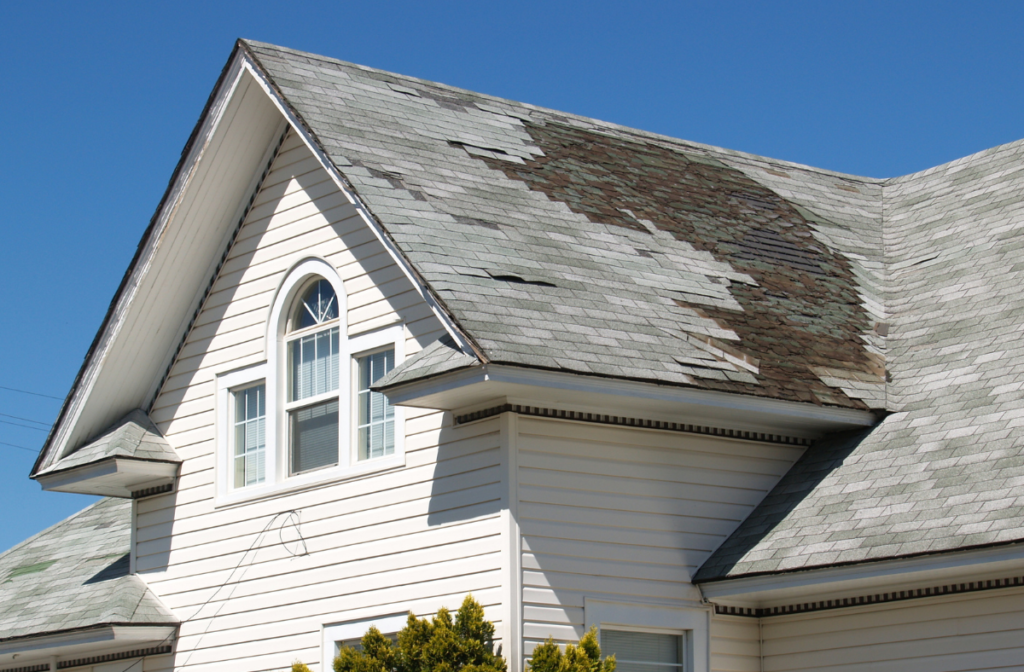When it comes to your home, few things are more important than your exterior siding. It’s your home’s first line of defense against wind, rain, heat, and cold, not to mention a major contributor to curb appeal and overall home value.
But like any part of your home’s exterior, siding doesn’t last forever.
How long your siding will last depends on several factors, including the type of material, how well it was installed, the climate where you live, and how well you maintain it.
Some siding materials can last decades with minimal upkeep, while others may require regular care to reach their full lifespan.
In this guide, we’ll compare the expected lifespans of the most common types of exterior siding, from vinyl to fiber cement to wood and more.
Table of Contents
Factors That Affect Siding Lifespan
When answering the question, “How long does siding last?”, there are a number of factors involved.
Climate and Weather Conditions
One of the biggest factors that can impact siding lifespan is the climate and weather conditions in your area.
For example, areas with extreme temperatures or high levels of moisture may cause certain types of siding to deteriorate quicker than others.
If you live in a region with heavy snowfall or frequent hurricanes, you may want to consider more durable siding materials like fiber cement or metal.
Maintenance and Upkeep
As mentioned earlier, some types of siding require more maintenance and upkeep than others.
Regular cleaning, painting, and sealing can help extend the lifespan of your siding.
It’s important to properly maintain your siding by following manufacturer recommendations and addressing any issues as soon as they arise to prevent further damage.
Need to replace your exterior siding? Contact us today for a FREE inspection and consultation.
Quality of Installation
The quality of installation also plays a significant role in the overall durability and lifespan of your siding.
Improper installation can lead to gaps, cracks, and water damage, which can significantly reduce the longevity of your siding.
It’s essential to hire a reputable and experienced contractor to install your siding properly.
Additionally, make sure to thoroughly inspect the workmanship after installation and address any concerns with your contractor immediately.
Material Quality
Another factor in how long siding lasts is the quality of the siding. Not all siding materials are created equal, and some may have a shorter lifespan than others.
When choosing your siding material, consider factors such as durability, resistance to weather elements, and maintenance requirements. Investing in higher-quality materials may cost more initially, but can save you money in the long run by reducing the need for frequent repairs and replacements.
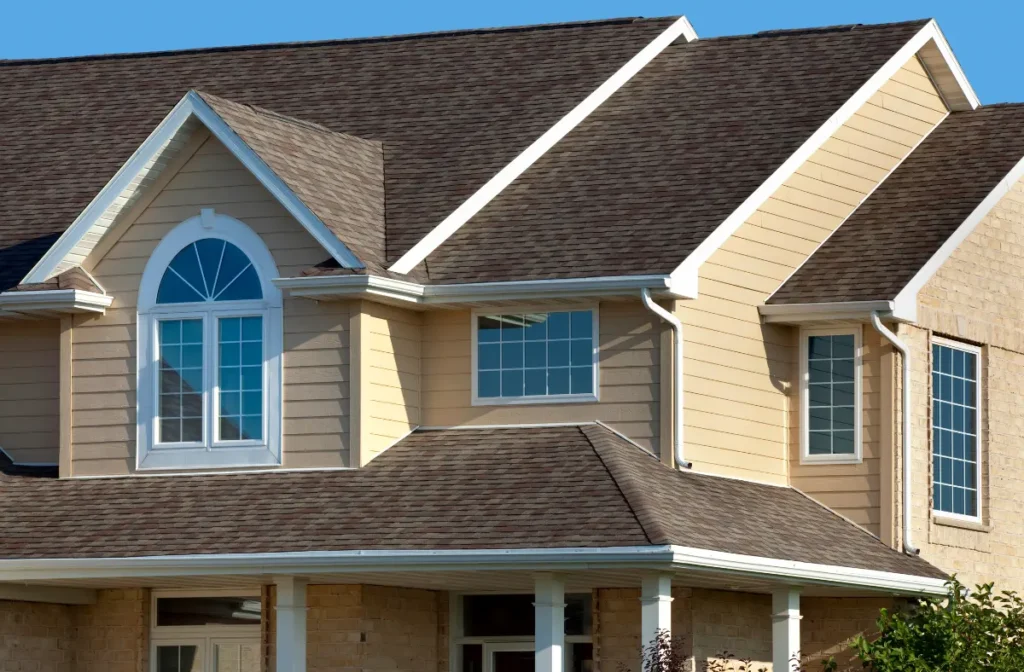
Pest and Moisture Resistance
Siding that’s resistant to pests and moisture can also last longer. Certain types of siding are less susceptible to insect damage and water infiltration, which can lead to rot and decay.
Regular maintenance can help prevent moisture from seeping into the structure of your home.
How Long Different Types of Siding Last
Now that you know the different factors that can impact how long siding lasts, let’s look at the lifespan of different types of house siding.
Vinyl Siding
The average lifespan of vinyl siding is between 20 – 40 years. As we noted above, vinyl siding is a little cheaper up front but is prone to warping and cracking in extreme heat or cold. It can also be damaged by flying debris from a storm. These factors can shorten the lifespan of vinyl siding.
Pros: Low maintenance and relatively inexpensive.
Cons: Can crack or fade over time, and is less durable in extreme weather.
Fiber Cement Siding
The average lifespan of fiber cement siding is around 50 years. Fiber cement siding, like James Hardie siding, is made from a mixture of cement, sand, and cellulose fibers. It is extremely durable and has low maintenance requirements.
Pros: Highly durable and resistant to rot, fire, and insects. Can withstand extreme weather conditions.
Cons: Slightly more expensive than vinyl siding and requires professional installation.
Wood Siding (Cedar, Pine, Redwood)
The average lifespan of wood siding is between 20 – 40 years if it’s properly maintained. To extend the lifespan of wood siding, it’s essential to regularly seal, paint, or stain it. With proper care, wood siding can add a beautiful rustic charm to a home.
Pros: Natural and environmentally friendly material. Can be painted or stained in any color. Can be repaired if damaged.
Cons: High maintenance requirements (painting every 4-5 years and sealing every 2-3 years). Prone to rot, mold, and insect damage without regular maintenance.
Metal Siding (Steel and Aluminum)
The average lifespan of metal siding is between 30 – 50 years. It’s relatively durable and fire-resistant. Metal siding can come in various styles, such as flat panels, shingles, and horizontal planks. It comes in a wide range of colors and can be painted or coated for added protection.
Pros: Low maintenance – only requires occasional washing. Resistant to rot, mold, and insect damage.
Cons: More expensive than other siding options. Difficult to repair if damaged (may require replacing entire panels). Can dent or scratch easily.
Stucco Siding
The average lifespan of stucco siding is between 50 – 80 years if it is properly maintained. Stucco siding is really only meant for dry climates, and is not ideal for moist climates unless it is waterproofed.
Pros: Durable and long-lasting. Low maintenance. Can be painted any color.
Cons: Expensive to install. Can crack or chip if not properly installed or maintained. Not suitable for moist climates without proper waterproofing. Repairs can be costly.
Brick and Stone Veneer Siding
The average lifespan of brick and stone veneer siding is between 50 – 100 years. It requires minimal maintenance and is resistant to fire, rot, and pests. However, it can be quite expensive to install compared to other siding options.
Pros: Extremely durable. Fire-resistant and pest-resistant.
Cons: Expensive upfront, and installation must be precise.
Not sure which type of siding is right for you? Contact us today for a FREE consultation!
When To Replace Your Siding
Eventually, you’re going to need to replace your house siding. Maybe it’s reached the end of it lifespan. Or maybe it got damaged in a storm. Whatever the case, there are certain signs to look for to determine whether you need to replace your siding.
- Warping, cracking, or fading: Over time, weather and environmental factors can cause siding to warp, crack, or fade. This not only affects the appearance of your home but also compromises its structural integrity. If you notice any of these signs on your siding, it may be time for a replacement.
- Moisture damage: Siding is designed to protect your home from moisture. However, if you see signs of water damage such as mold or mildew growth, rotting wood underneath the siding, or blistering paint or wallpaper inside your house, it could mean that your siding is no longer doing its job effectively.
- Higher energy bills: Old, damaged siding can lead to higher energy bills as it allows air to escape from your home. If you notice a sudden increase in your energy costs, it could be due to your siding needing replacement.
- Pest damage: Damaged siding can also make your home vulnerable to pests such as termites and wood-boring insects. These pests can cause significant damage to the structure of your home and should be addressed immediately.
- Decreased curb appeal: Your home’s exterior appearance is an important factor in its overall value. If your siding is looking worn, damaged, or outdated, it can significantly decrease the curb appeal of your home. This could affect potential buyers if you ever decide to sell your house.
Final Thoughts
While no siding lasts forever, some materials offer significantly longer lifespans and better durability than others.
Ultimately, choosing the right siding comes down to more than just lifespan. You’ll also want to consider factors like maintenance requirements, upfront costs, climate suitability, and the overall look you want for your home.
No matter which material you choose, investing in quality products and professional installation will go a long way toward ensuring your siding stands the test of time.
If you’re ready to repair or replace your exterior siding, contact M&M Roofing, Siding, and Windows today. We’ll come to your house and provide a FREE inspection and consultation. With over 40 years of experience and more than 1,000 positive Google reviews, you can be sure you’re in good hands.
M&M Roofing, Siding, and Windows has been serving Texas homeowners for over 40 years. Call us or complete the request form to schedule a FREE inspection and consultation.

